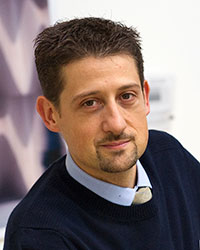Emilio Baglietto
Associate Department Head and Professor of Nuclear Science and Engineering
emiliob@mit.edu
617-253-4231
24-205
Consortium for Advanced Simulation of Light Water Reactors (CASL)

Associate Department Head and Professor of Nuclear Science and Engineering
emiliob@mit.edu
617-253-4231
24-205
Consortium for Advanced Simulation of Light Water Reactors (CASL)
PhD, Nuclear Engineering, Tokyo Institute of Technology, 2004.
M.S., Nuclear Engineering, University of Pisa, 2002.
The availability of more robust and physically realistic turbulence models will bring immediate and major improvements to the reactor's economic and safety performance. The unique generality of the approaches that we are developing allows designing new configurations and innovative concepts, accurately reproducing complex flow and heat transfer distributions; these improvements directly translate into higher efficiency and reduced failures.
Unsteady flows are often encountered in nuclear applications and can strongly affect the efficiency and reliability of components. Understanding of the underlying physical mechanism and development of groundbreaking modeling techniques is a focus of our research.
Computational multi-phase flow techniques are being developed to provide a faithful representation of the complex boiling and two-phase flow regimes. Applications include the use of interface tracking techniques to develop cross-flow correlations for subchannel analysis codes and use of the Euler-Euler approach to represent the boiling phenomena in PWR and BWR cores. These methods have demonstrated great potential, and pioneering work is ongoing to bring them up to develop reliable design tools.
Development of innovative computational approaches is being incorporated with the ability of implementing full scale detailed models of reactor designs. These high quality, large scale models will incorporate validated multiphysics in order to predict complex multileveled interactions in the early stage of the design. Such innovative tool will significantly modify the project approach for advanced solutions and innovative concepts.
22.313J Thermal Hydraulics in Power Technology
22.315 Applied Computational Fluid Dynamics and Heat Transfer